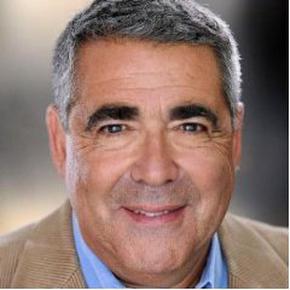Meet the Expert

Jonathan Dann
President, Jon Dann Communications
- 30-year TV news career, including staff producer for NBC’s "Dateline," encompassing new delivery platforms for digital storytelling.
- Recipient of three Peabody Awards, three duPont-Columbia Awards, and a Certificate of Special Merit from the Academy Awards.
- Won his third duPont-Columbia Award for producing the PBS special "War Stories from Ward #7D," which followed the struggles of Iraq War veterans suffering from traumatic brain injury. In 2011, he was a finalist for a Gerald Loeb Award for financial reporting.
- Produced the highest-rated program in CNBC history, "Marijuana Inc: Inside America’s Pot Industry." Hour-long documentary has aired more than 100 times and was nominated for a national Emmy.
- Other productions include "Tom Brokaw Reports: Boomer$!," two-hour documentary on the legacy and challenges of the baby boom generation, reported by NBC Senior Correspondent Tom Brokaw, with whom Dann collaborated for nearly a year as program creator and senior producer.
Meeting Packages from $500

Your Meeting Package Includes:
- All 8 Best Practices
- Pre-Meeting Discovery Process
- One-on-One Call with Expert
- Meeting Summary Report
- Post-Meeting Engagement

Digital Storytelling
President, Jon Dann Communications
Defined Terms
- A-roll
- A-roll is the footage focused on the primary and most essential aspects of the story – either unfolding action that has no need for narration or on-camera interviews.
- ADR
- Automatic Dialogue Replacement. ADR is done in post-production if any audio from the shoot that is needed for the final cut has dialogue that must be replaced in a studio setting. This can run into a lot of money. Trained actors are much better at this than non-actors as they must match dialogue with a projection of themselves saying something during the shoot. Whenever a producer or director is working with non-actors, it's highly advisable to get good audio during the shoot.
- B-roll
B-roll refers to the footage that is shot to add visual texture to the piece and needs narration to provide meaning – i.e., simply pictures, not interviews or unfolding action on-camera that is self-explanatory. It's that close-up shot of the beaker bubbling in the lab, a beautiful landscape, or other various highly-visual activities. This valuable imagery can add a lot of interest and can be useful for cutaways and smooth out the transitional moments in the video. A second camera may be assigned to get this footage.
- Casting
- The process of determining on-camera talent. Sometimes this is pre-determined, but if not, it's important to identify the best on-camera talent. Not everyone can embody and carry a story and be engaging on screen. A pre-interview process can often help the producer or director in this selection.
- Digital storytelling
- Any story that is told for any purpose using digital video production is referred to as "digital storytelling." Usually, this refers to a short-form, reality-based production – not a TV ad or feature-length narrative with actors.
- DP
- DP stands for "Director of Photography." This is the person who is in charge of the camera unit, and can be just one individual or be comprised of a team, depending on the needs of the production. The D.P. helps select and frame the visual sequences on a video or film production. The DP may also be referred to as a "cinematographer" on a film, or as the "videographer" in the digital video realm.
- Editing
- The process of cutting any motion picture together, frame by frame. On a feature length film or documentary, both picture and sound editors work on these two key elements separetely and come together for the mix. On a digital video, the picture editor often functions as both picture and sound editor, and there's a final sound mix where the sound elements are smoothed out and finalized.
- Offline and online editing
- The initial cutting process on video is done offline on a non-linear system such as the Avid or on a high-end computer using Final Cut Pro. Once the picture edit is "locked," it goes into an online session, where more expensive equipment is used to color correct and fix any other imperfections that remain in the picture.
- Post-production
- Post-production commences as soon as the shoot is completed. It includes picture and sound editing, scoring or music supervision, the sound mix, and any transfers or duplications of the finished project.
- Pre-production
- Also known as "prep," this is the most important stage of any production. During pre-production, the story is finalized; locations are identified, scouted and secured; on-screen "talent" is selected; and time is spent developing a trust bond with the talent so that everyone understands what will be expected of them once the camera begins rolling. Good planning and solid research during prep pave the way for a smooth shoot without wasting time and money.
Digital Storytelling:
Defined Terms
Expert Topic
